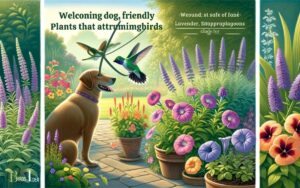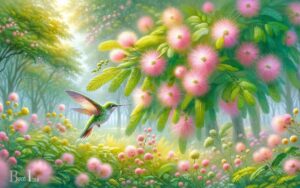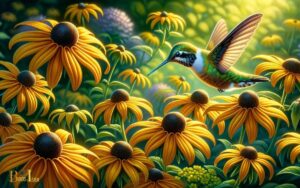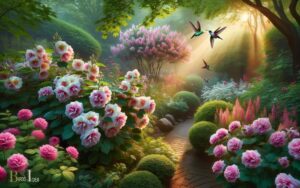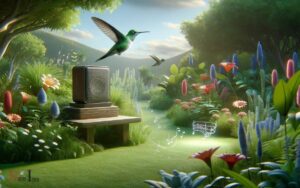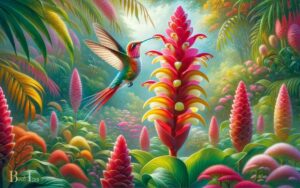Do Bleeding Hearts Attract Hummingbirds? Yes!
Yes, Bleeding Hearts (Dicentra spectabilis) are attractive to hummingbirds. Their heart-shaped flowers and vibrant colors make them appealing to these birds, offering a valuable nectar source in the garden.
Bleeding Hearts not only add a touch of romantic beauty to any garden with their distinctive flowers but also serve as a magnet for hummingbirds, creating a lively and dynamic environment for both bird watchers and garden enthusiasts alike.
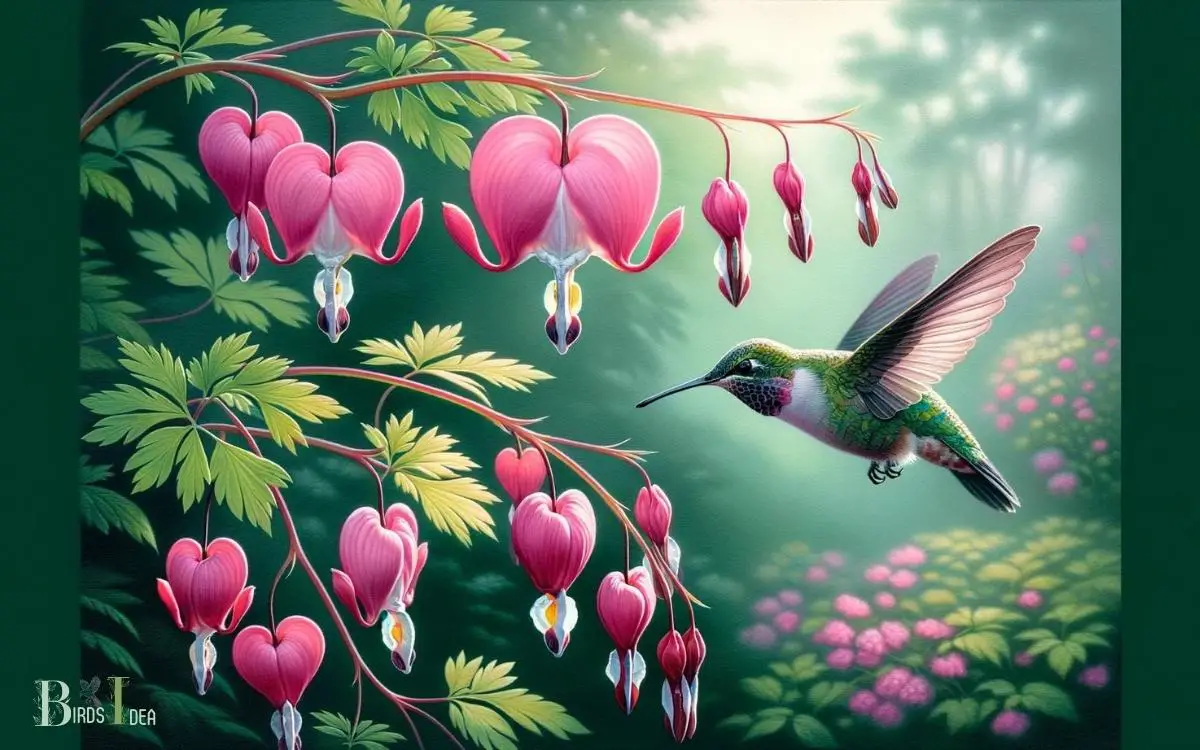
Key Takeaway
Relationship Between Bleeding Hearts & Hummingbirds
Many gardeners have observed that bleeding hearts often attract hummingbirds with their unique shape and vibrant colors.
The distinct, heart-shaped flowers of the bleeding heart plant, scientifically known as Lamprocapnos spectabilis, are particularly appealing to hummingbirds.
Their bright pink and red hues, coupled with their dangling, pendulous structure, make them a magnet for these tiny, energetic birds.
Hummingbirds are drawn to the nectar within the flowers, and the shape of the bleeding heart provides easy access for these agile flyers.
The symbiotic relationship between bleeding hearts and hummingbirds is not only visually captivating but also beneficial for both parties involved.
Gardeners and nature enthusiasts often find joy in witnessing these graceful creatures flitting among the delicate blooms, adding an extra layer of beauty and charm to their gardens.
Characteristics of Bleeding Hearts
The unique shape and vibrant colors of the bleeding heart flowers make them particularly appealing to hummingbirds, as evidenced by their distinct, heart-shaped form and bright pink and red hues.
Hummingbirds are attracted to the tubular shape of the flowers, which allows them to easily access the nectar with their long, narrow bills.
Additionally, the dangling clusters of blooms on the arching stems make it convenient for hummingbirds to hover and feed.
The bright pink and red colors of the bleeding heart flowers stand out against the green foliage, catching the attention of hummingbirds, which are drawn to these vivid hues.
The combination of these characteristics makes bleeding hearts a desirable and attractive food source for hummingbirds, creating a mutually beneficial relationship between the two.
Tips for Attracting Hummingbirds to Your Bleeding Heart Garden
To attract hummingbirds to your bleeding heart garden, consider planting a variety of flowering plants that bloom at different times throughout the year.
This will provide a consistent nectar source for the hummingbirds and keep them coming back to your garden.
Some tips for attracting hummingbirds include:
- Choose a mix of native flowers such as trumpet vine, bee balm, and cardinal flower to provide a diverse and continuous nectar supply.
- Incorporate a variety of flower colors, especially reds, oranges, and pinks, as these hues are particularly attractive to hummingbirds.
- Place hummingbird feeders strategically around your garden to supplement natural nectar sources and provide additional food for these delightful birds.
By following these tips, you can create an inviting environment that will entice hummingbirds to frequent your bleeding heart garden.
Other Plants to Complement Bleeding Hearts for Hummingbird Attraction
Complementing bleeding hearts with additional nectar-rich plants can further enhance the likelihood of attracting hummingbirds to your garden, consistently providing them with a diverse and sustainable nectar supply.
Consider planting these nectar-rich flowers alongside your bleeding hearts to create an enticing environment for hummingbirds:
| Plant | Nectar-Rich Level | Bloom Time |
|---|---|---|
| Bee Balm | High | Summer |
| Salvia | High | Spring to Fall |
| Trumpet Vine | High | Summer to Fall |
These plants not only offer abundant nectar but also bloom at different times, ensuring a continuous nectar supply throughout the seasons.
By adding these complementary plants, you can create an ideal habitat for hummingbirds in your garden, providing them with a variety of nectar sources to support their presence year-round.
Creating an Ideal Habitat for Hummingbirds in Your Garden
Creating an ideal habitat for hummingbirds in your garden involves strategically placing nectar-rich flowers that bloom at different times to ensure a continuous nectar supply throughout the seasons.
To attract hummingbirds to your garden, consider the following tips:
- Plant a variety of nectar-rich flowers such as bee balm, salvia, and trumpet vine to provide a diverse and consistent food source.
- Incorporate flowering shrubs and trees like azaleas, butterfly bush, and red buckeye to offer additional nectar and perching spots for hummingbirds.
- Install a water feature such as a birdbath or a mister to provide hummingbirds with a source of clean water for drinking and bathing.
Conclusion
Bleeding hearts do indeed attract hummingbirds, thanks to their unique characteristics and nectar-rich flowers.
Interestingly, a single hummingbird can visit up to 1,000 flowers in a single day, making them essential pollinators for many plants, including bleeding hearts.
By creating a welcoming garden habitat with the right plants and conditions, you can enjoy the beautiful sight of hummingbirds visiting your bleeding hearts.

